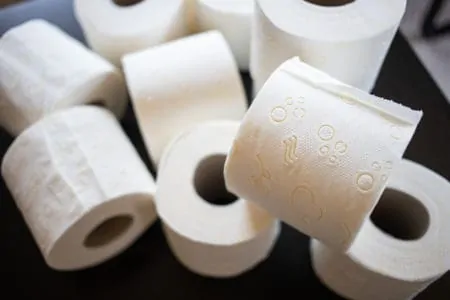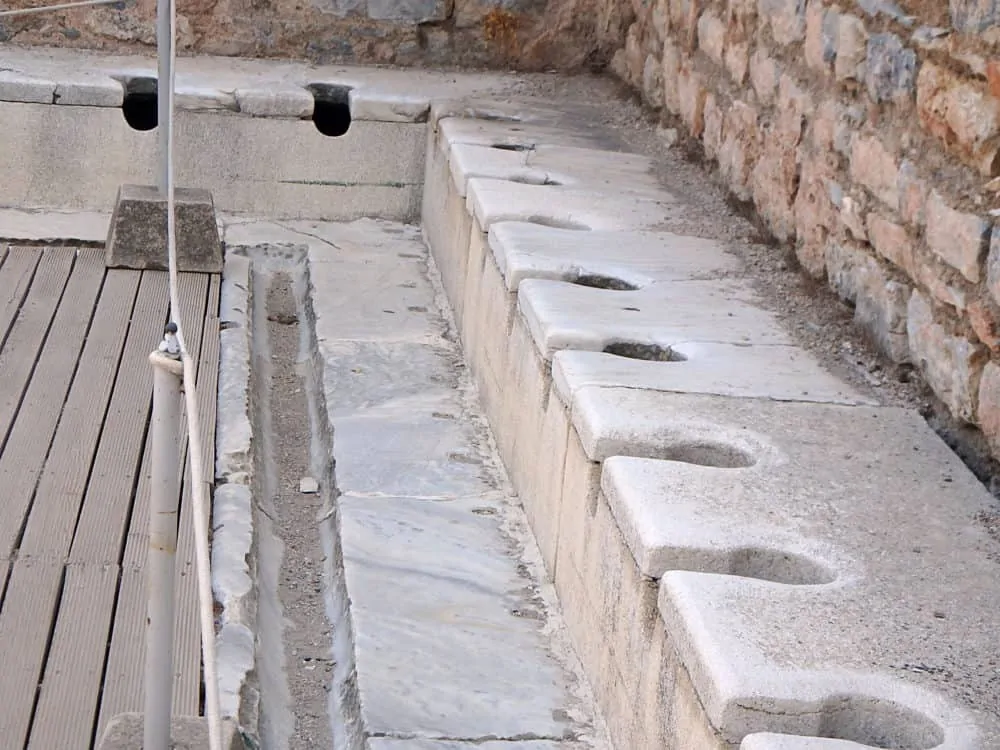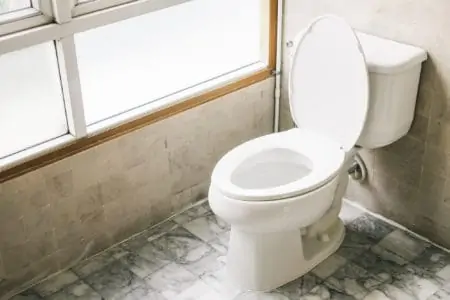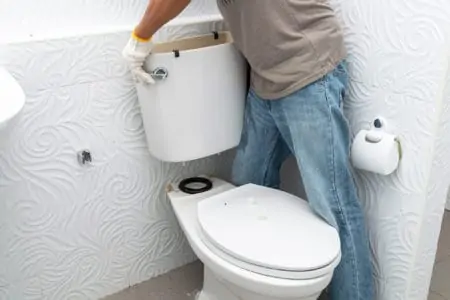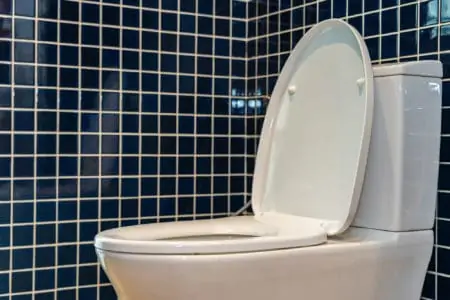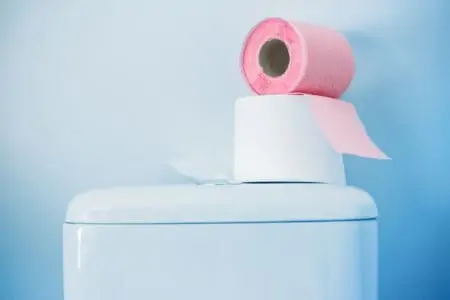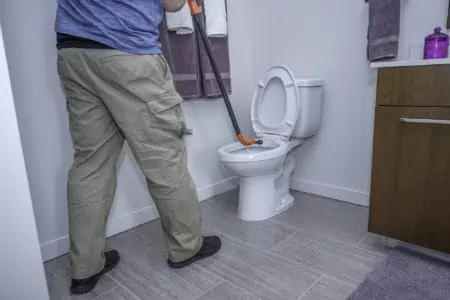It can be easy to take toilet paper for granted, at least when we have easy access to it. However, mass-produced toilet paper is still a relatively recent invention and ancient people had to use various methods to clean themselves.
More than a thousand years before it was found near the toilets of the wider population, toilet paper was a luxury item enjoyed by a select few. So, how did toilet paper become so widespread?
In this article, we will explore the weird and wonderful world of toilet paper, including its history and interesting statistics. We will also take a look at its impact, how to use less of it, and some strange but true facts about toilet paper.
Key Takeaways
- Toilet paper has a rich history, dating back to the 6th century in China.
- Before toilet paper, people used various items like leaves, grass, and even ceramics to clean themselves.
- Toilet paper production has a significant environmental impact, contributing to deforestation and pollution.
- Using recycled toilet paper and adopting eco-friendly habits can help reduce the environmental impact of toilet paper use.
What Did People Use Before Toilet Paper?

More people have access to toilet paper than ever before. In the United States, you can buy relatively affordable toilet paper from supermarkets, convenience stores, gas stations, and online retailers.
While toilet paper in any form was once a luxury, you can now buy multi-layered, super-soft paper, scented paper, or even paper coated with a soothing balm. It used to be almost impossible for the vast majority of people to get toilet paper, so what did they use instead?
- The Romans used a xylospongium or tersorium to clean themselves. This was essentially a sponge on a stick, which was doused in sea brine or vinegar. It was communal, so when Claudius finished wiping, he might pass it to the man sitting next to him (1).
- Communal toilets were widespread in the Roman Empire. The largest rooms had as many as 80 cess holes, so you would likely have to share your tersorium with at least several other people.
Users of public toilets in Ancient Rome cleaned themselves with a communal sponge on a stick. - There is evidence that the ancient Greeks used pieces of broken ceramics such as plates and dishes to clean themselves (2). Even the cheapest toilet paper today can’t compare to how coarse this must have been.
- Other ancient people used grass, leaves, and even corn cobs to clean their rear ends.
- In 16th-century France, the wealthy used hemp, lace, and even wool to stay clean.
- 17th-century sailors defecated over the side of their ship and then hauled in a rope that dangled into the sea. They then used this rope to clean themselves, which was probably one of the more hygienic early methods.
- In many middle eastern countries, the left hand was used for wiping, which is why some cultures still frown on shaking with the left hand (3).
- Other methods of personal hygiene before widespread toilet paper included moss, dirt, sand, water, ferns, fruit skins, stones, and snow.
Toilet Paper History

More than a thousand years before it first entered mass production, toilet paper was already being used in Asia. Let’s take a quick look at some of the key dates in the history of toilet paper:
- The earliest recorded use of toilet paper was in China during the Tang Dynasty in the 6th century (4).
- By 1391, during the Ming Dynasty, toilet paper was scented for the Emperor and his family. These sheets were huge by today’s standards — each measuring two feet by three feet (5).
- In 1857, New Yorker Joseph Gayetty introduced what is recognized as the earliest modern toilet paper. He infused his sheets with Aloe and dispensed them from a box similar to modern tissue boxes. Gayetty claimed his toilet paper prevented hemorrhoids, so this early paper was treated as a medical item (6).
- In 1928, German Hans Klenk was the first to manufacture and sell toilet paper on a roll. He used silver glue to join the brown paper sheets to his toilet roll (7).
Toilet Paper Statistics

Although it is more widespread than ever before, between 70% and 75% of the world’s population still doesn’t use toilet paper (8). That amounts to more than 4 billion people.
This is because some people live in regions where this is a lack of trees or it is not possible to manufacture paper. In other areas, it is a matter of choice, as some cultures view toilet paper as dirty and use methods other than wiping to stay clean.
- The US population spends more than $6 billion per year on toilet paper (9).
- The average person in the United States will use approximately 384 trees worth of toilet paper in their lifetime.
- This equates to about 100 rolls of toilet paper per person annually.
- Pulp from a Eucalyptus tree (a favorite toilet paper material) will provide about 1,000 rolls.
- The UK has the highest average toilet roll use per person, about two and a half times more than the European average.
- The United States uses more toilet paper than any other country in the world, with an average US resident using about 57 squares of paper per day.
- About 34 million rolls of toilet paper are used every day in the United States.
- The US contains about 4% percent of the global population but uses 20% of the world’s toilet paper (10).
- The average toilet paper used around the globe is 100 rolls or 20,000 sheets.
- More than 84 million rolls of toilet paper are produced every day around the world (11).
- On average, it takes 71 toilet visits to use a single roll of toilet paper.
- National toilet paper day is on August 26 (12).
Environmental Impact of Toilet Paper

When we use toilet paper, it is easy to forget the damage it can do to the natural world. However, the amount of paper we use daily has a significant environmental impact.
- Globally, we dump the equivalent of over 270,000 trees worth of paper into landfills each year. Toilet paper accounts for over 10% of that total (13).
- One tree provides enough material for up to 1,500 rolls of toilet paper (14).
- Recycled toilet paper accounts for just 2% of the paper sold in the United States. This means 98% of toilet paper used in American homes is made from what is known as virgin-pulp material (15).
- Since 1996, more than 28 million acres of 200-year-old boreal forests have been cut down in Canada to meet the demand for soft, high-quality toilet tissue. That is an area the size of Pennsylvania (16).
- This deforestation threatens the way of life of 600 indigenous communities who call these forests home.
- In addition to the environmental impact of felling so many trees, 253,000 tons of chlorine and 473,587,500,000 gallons of water are used during toilet paper production.
- In an attempt to offset the environmental impact of cutting down so many trees, the US plants about 1.6 billion trees annually.
- In Canada, there has been a government push to increase the number of trees planted to over 200 million annually (17).
How to Use Less Toilet Paper

There are some simple changes we can all make to reduce the amount of toilet paper that is wasted. Most of these changes are only minor but could make a major difference collectively.
- Use recycled toilet paper. If everyone used one roll of recycled paper instead of premium paper, it could save as many as 424,000 trees (18).
- Use standard-size rolls. When you see more, it is natural to use more. Another trick is to hide all the spare toilet rolls. Seeing extra rolls can also encourage you to use more, so it is best to keep them out of sight.
- Make a conscious effort to use less. Memorize this phrase: if it’s yellow, one sheet is the fellow. If it’s brown, four can go down.
- Invest in a bidet attachment. These toilet attachments use water jets to wash both the back and front. Some even feature an air dryer, so you won’t need to use any toilet paper at all.
- Change your wiping technique. Fold your toilet paper instead of using multiple sheets. This gives you more surface area to wipe with and wastes less toilet paper.
- Try flushable wipes. These wipes will clean you more effectively, which means you will use less paper. There are also flushable sensitive skin wipes if you find standard wipes too harsh.
- Squash the roll. If you flatten the toilet paper roll so it doesn’t rotate as easily, you are less likely to accidentally pull off too much paper.
Toilet Paper Fun Facts

The toilet paper industry in the United States alone is worth a staggering $200 billion, but there are plenty of other strange and fascinating toilet paper facts:
- The average American, if they live to the age of 80, will flush over 1.5 million sheets of toilet paper in their lifetime (19).
- Japanese horror writer Koji Suzuki, best known for writing “The Ring”, once wrote an entire novel on one roll of toilet paper. It was almost three feet long.
- It is possible to buy glow-in-the-dark toilet paper, as well as sudoku paper if you get bored on the toilet.
- Beyonce uses red Renova paper, one of the most expensive toilet paper products in the world (20).
- There is even toilet paper on the International Space Station (21).
- Charmin created the world’s largest roll of toilet paper, measuring eight feet high, with a diameter of nine feet (22).
- Flo and Richard Newman are toilet paper collectors and curated the Whole World Toilet Paper Museum.
- In the city of Penza, near Moscow, Russian workers once received a bonus payment of 150 rolls of toilet paper (23).
- In 1995, Ricardo Jefferson stole $34,000 worth of toilet paper from the Philadelphia Eagles stadium (24).
- In New York, there is an 8% sales tax on toilet paper (25).
- The Scott Company accidentally invented paper towels after producing a paper that was too thick to be used as toilet rolls (26).
- In 1971, a strike by shipping workers in San Francisco led to Hawaii running out of toilet paper. The strike lasted 134 days!
- The Pentagon allegedly uses an average of 666 rolls of toilet paper per day (27).
- 7% of Americans admit to taking toilet rolls from their hotel rooms (28).
- Popular nicknames for toilet paper include bog roll, loo roll, bum wad, TP, and tissue.
- In 1973, Johnny Carson caused a toilet paper shortage by joking on his show that toilet paper was in short supply. People panic-bought in response (29).
- The 2020 Coronavirus pandemic led to mass panic-buying of toilet rolls around the world (30).
- During Operation Desert Storm, the US military used colored toilet paper to camouflage their tanks and vehicles until they could be repainted (31).
- Charmin issued a challenge to create a wedding dress using only toilet paper. The first prize was $2,000 (32).
FAQs
Want Some TP?

As you can probably tell by now, there is a lot more to toilet paper than meets the eye, or anywhere else for that matter. The next time you are sitting on the toilet and reach for a gentle roll of paper, spare a thought for the Roman waiting for their turn with the sponge on a stick. Think about the ancient Greeks, scratching their rear ends with shards of pottery.
Thankfully, modern solutions to bodily hygiene are far less uncomfortable to use. Whether you use toilet paper or other methods such as a bidet, your experience visiting the toilet is a far cry from what it would have been just a century ago.
